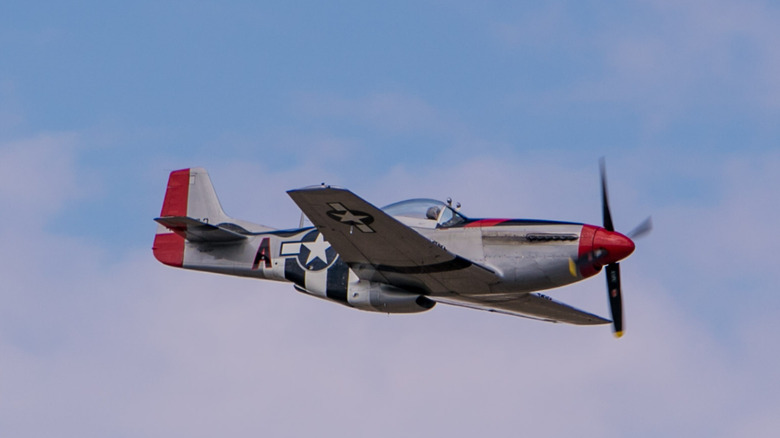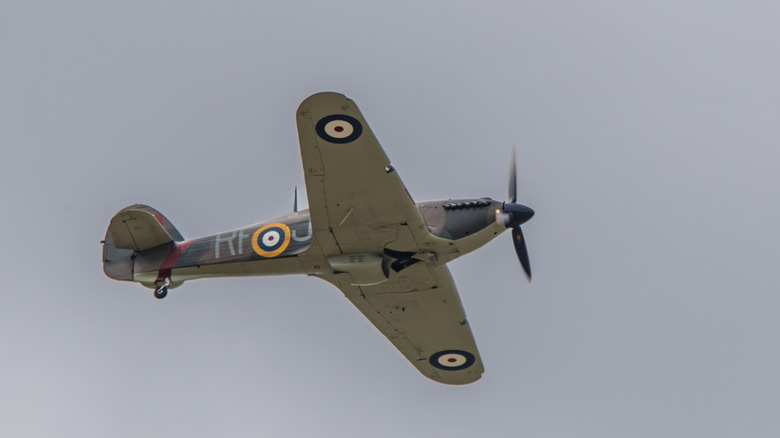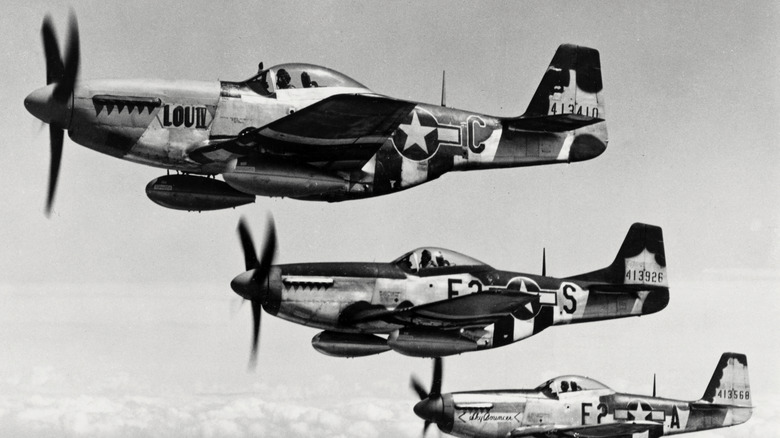Why Did The P-51 Mustang Have A Scoop On The Bottom?
The P-51 Mustang is possibly one of the most important airplane the United States ever flew, helping to take down the Third Reich in World War II. But how did it become such a success in the skies? Its design is one reason, including its instantly recognizable signature scoop. This acted not just as an efficient radiation system but was known to increase the plane's thrust, as well.
Hidden behind the scoop is a large block — the cooler radiator and aftercooler — as well as the oil cooler. The way this system's heat exchanger worked ensured that the engine, its components, and its fuel wouldn't overheat.
This was the result of a need for reduced cooling drag, which was becoming a big problem in the 1920s. During World War I, planes with liquid-cooled engines didn't have the same radiator setup, causing a noticeable drag as other planes were starting to speed up. Engineers and designers started looking for solutions — how could they cool air while not losing that much-needed momentum
How the Meredith Effect led to the P-51's scoop
After some lackluster cooling solutions, scientist F.W. Meredith figured out that having some sort of cooling air exit stream could produce thrust back in 1935. Meredith theorized that drag could be reduced if the air used to cool down the radiator system was slowed down before it reached that area. He also wrote that the waste heat energy produced by the system could be recovered and then used to counter the drag it initially produced.
Meredith's studies explained that air can be slowed down and have its pressure increased by directing the flow through a divergent duct (or diffuser) — like a scoop. He then stated that hot air that's under pressure can be converted to kinetic energy, which means it could be sped up and change the plane's momentum — or create thrust — as it passed through that duct.
Early examples of a ducted radiator system appeared on planes like the Hawker Hurricane and Supermarine Spitfire and was then modified by teams hoping to beat world speed records, like the British Napier-Heston T.5 race plane, which ultimately ended up overheating when it attempted its initial test in 1940.
P-51 Mustang boasts incredible performance in World War II
As the experiments continued in Europe, teams in America decided to try out Meredith's theories. In 1940, the designers working on the P-51 used a cooling system on the plane that would allow air to flow out of the plane, which included a scoop with a movable inlet and exit doors. After some wind tunnel tests, the system switched to a fixed inlet and added an oil and intercooler functions. A long duct was also implemented, which was different from the short ducts that were used on planes in Europe like the Spitfire.
It's unclear to this day if the scoop on the bottom of the P-51 Mustang decreased cooling drag or how much it improved its thrust. However, it's safe to say that the P-51 had an incredible performance either way. The low-wing fighter was fueled by a turbo-supercharged in-line, liquid-cooled Allison engine, which allowed it to reach 425 miles per hour while 30,000 feet in the air. It was not only fast, but considered extremely aerodynamic and able to drop 2,000 pounds of bombs, some of its many strengths during the war.
The P-51 continued to be improved in the coming years, increasing its speed and the distance at which it could hit targets. It became one of the deadliest planes during World War II. Its current speed record is 531 mph, which was set by a modified P-51 in 2017.


